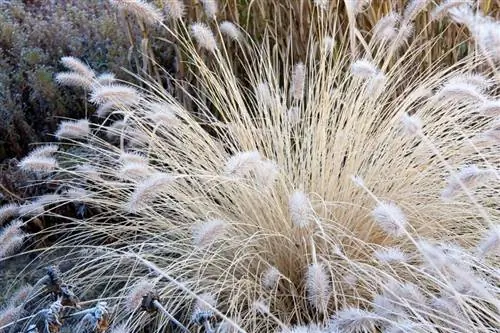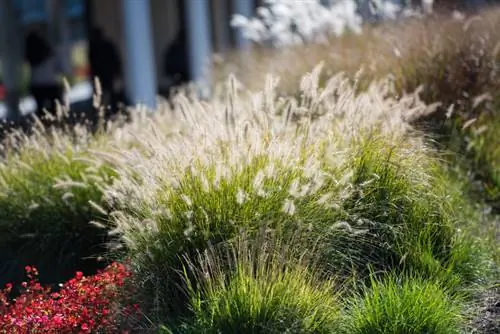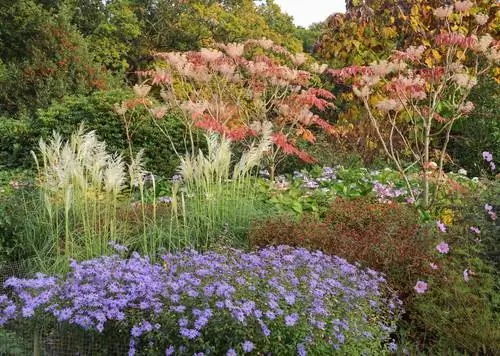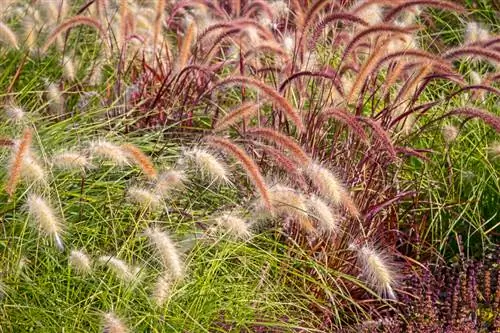- Author admin [email protected].
- Public 2023-12-16 16:46.
- Last modified 2025-06-01 06:02.
There is an ornamental grass to suit every taste. Whether large or small, evergreen, wintergreen or summergreen, with narrow or broad leaves, with red or yellow-brown autumn leaves, with bushy or bristly flowers - the variety seems almost limitless. But what about winter hardiness?
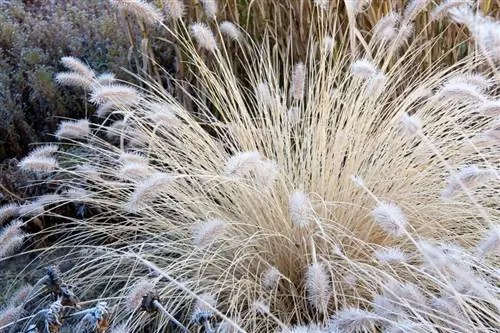
Which ornamental grasses are hardy?
Many ornamental grasses are hardy, such as miscanthus, pennisetum, pampas grass and giant feather grass, which can tolerate temperatures down to -20°C. However, it is recommended to protect more sensitive grasses in winter, for example by tying them together or covering their roots.
These ornamental grasses are hardy
Most of the ornamental grasses that can be found commercially in this country prove to be frost-tolerant and hardy. They can easily tolerate temperatures down to -20 °C. These include, among others:
- miscanthus
- Schmiele
- Pennisetum grass
- Diamondgrass
- Switchgrass
- Love grass
- Pampas grass
- Giant feather grass
- Flatgrass
- Bearskin Fescue
- Silver Eargrass
- Blue Pipe Grass
- Riding grass
- Japan sedge
- Morning Star Sedge
For example, ornamental oats, silver grass, millet, feather bristle grass, brome and hare's tail grass are not hardy and therefore annual. But these species like to sow themselves every year. Therefore, you don't have to replant them again and again.
Protect in cool regions
In cooler regions such as high altitudes or in coastal areas, it is not a mistake to protect ornamental grasses in winter.
- tie tall grasses such as pampas grass together into a knot
- Cover the root area with brushwood, leaves or a layer of compost mulch
- Leave the stalks standing over the winter
- if applicable Cut off the flowers in autumn (to prevent self-seeding)
Do not fertilize from September onwards
Anyone who generously supplies their ornamental grasses with fertilizer after mid-September will soon be left behind. The late application of fertilizer has a negative effect on the winter hardiness of these plants. It makes them more sensitive to frost. Therefore: Do not fertilize from August onwards!
Ornamental grasses in the bucket - helpless without support
Ornamental grasses that are supposed to spend the winter in a pot, for example outside on the balcony or terrace, feel completely helpless. They especially need some attention in winter otherwise they could dry out, drown or even freeze to death.
Ornamental grasses in pots on the balcony or terrace or at the entrance to the house should always receive winter protection from October onwards. This should be left in place until March. Otherwise there is a risk that their roots will freeze and the plants will dry out because they can no longer absorb water.
Drain off excess water and water when dry
If the potted plants are on the wall of the house, they are not exposed to the weather. It follows that they do not receive moisture from above. Therefore, you should water these ornamental grasses sparingly in winter. Just enough so that they don't dry out! If the potted plants are outdoors, they should be protected from moisture. This is usually done by the stalks, as long as they have not been cut off.
Tip
Ornamental grasses that are considered hardy but were only planted outdoors in autumn should still be urgently protected in the root area in the first year. They have not been able to root properly until winter and are therefore sensitive to frost.

